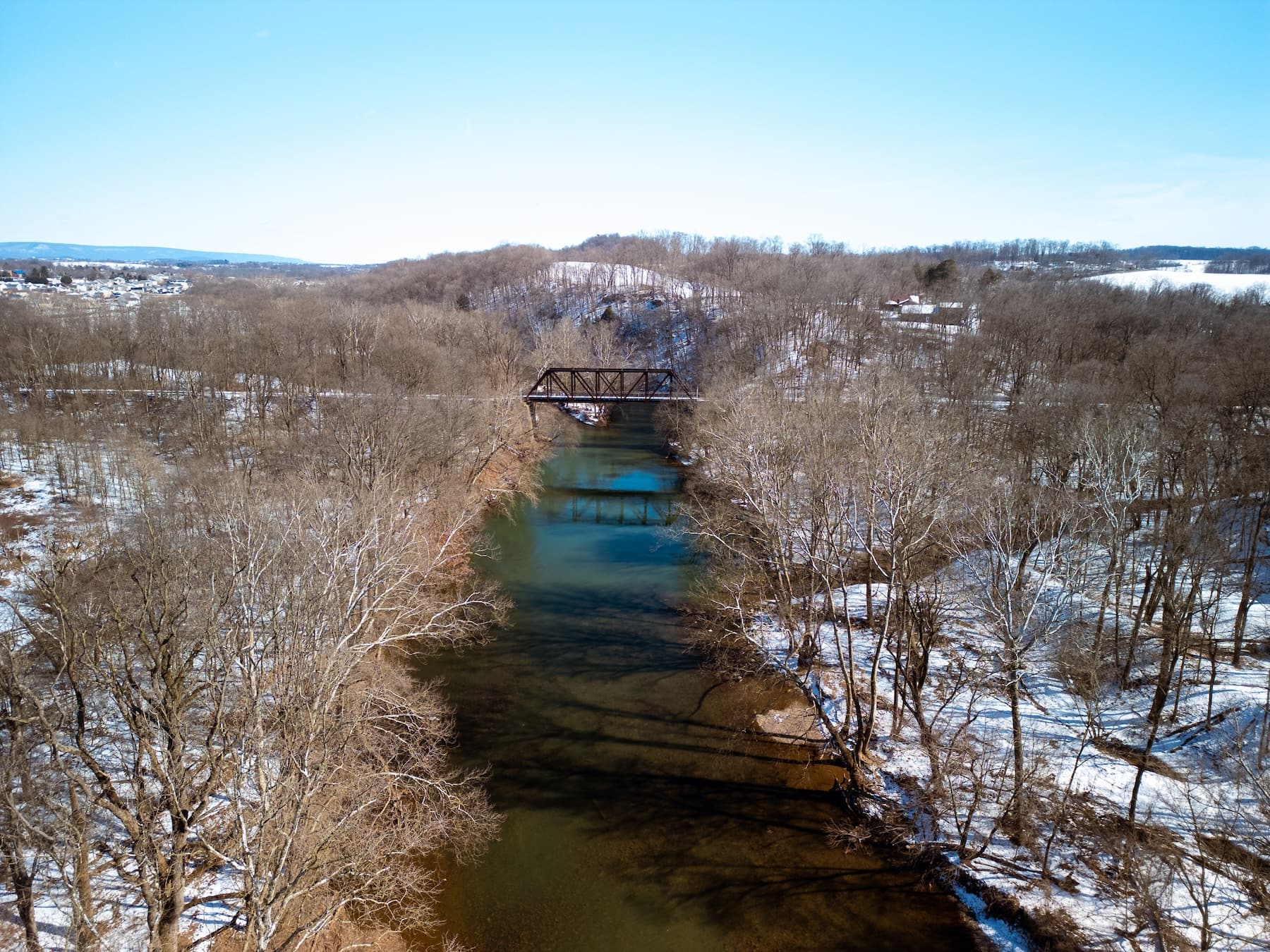This article was funded by LebTown donors as part of our Civic Impact Reporting Project.
When Lebanon County’s first landfill cell with a polyethylene liner opened in 1991, the Greater Lebanon Refuse Authority projected the seven-celled Schilling landfill would reach capacity in 2018.
Fast forward to 2024, and the seventh cell of that 52-acre landfill is still taking trash.
“Schilling lasted longer than anticipated because of efficient management, compaction of the waste, and recycling,” said GLRA executive director Skip Garner. “But it will be closing in the next year.”
GLRA began planning for that closure in 2018. It applied to the state Department of Environmental Protection for a permit to operate a new site, the Heilmandale landfill, on 48 acres north of Russell Road.
Read More: (2020) GLRA explains landfill expansion project that has neighbors concerned
The new landfill is being constructed on the back of on an unlined landfill that likely operated 50 to 60 years ago, according to Jim Zendek, GLRA staff engineer.
Work on the first of Heilmandale’s six cells began in early 2023 when some waste from the older landfill was excavated in order to construct a level foundation for what would become cell 8, Zendek said.

Then came a geocomposite liner, a high-density polyethylene liner and 18 inches of stone. This is done to prevent leakage of liquids or leachate created by the complex chemical and biological processes that occur as trash decomposes.
In August 2023, the first load of refuse went into cell 8. It should take trash for at least four years, said Garner who added the entire Heilmandale site has capacity until 2039.

“We’re being very selective about the first layer of waste going into the new landfill,” Zendek said. “Problematic waste (that could puncture the liner system) goes to Schilling.”
GLRA was formed 65 years ago to manage Lebanon County’s waste. Prior to 1959, the county was littered — literally — with “garbage dumps,” as common practice was for municipalities to collect residents’ refuse and dump it into open trenches, ravines or abandoned quarries.
Refuse haulers were not licensed, collection and disposal methods were haphazard, and fires, odors and disease-carrying rodents were common, according to news reports of the time.
Starting in 1957, county officials began advocating for a sanitary landfill as a means of protecting public health and phasing out the open-air dumps and their unhygienic conditions. “Sanitary” meant the landfill should be located away from populated areas; waste should be compacted, covered with several inches of soil and layered; and trained staff should manage the facility.
Seven sites were considered before the decision to purchase a site that was already operating as a landfill in North Annville Township.
It was not until 1988 that DEP required liners for each cell and a system for handling leachate. GLRA pumps leachate out of its lined cells for treatment at the City of Lebanon Authority’s wastewater treatment plant.
“DEP has said that with double-lined landfill cells, there is almost no environmental issues from leachate,” Garner said.
Today GLRA has slightly more than 500 acres across North Annville, North Lebanon and Swatara townships. About 100 acres of the site are the two lined landfills, Schilling and Heilmandale. But there may be other older, unlined landfills.
When GLRA opened in 1959, it received 100 cubic yards a day, or between 10 to 15 tons per day, according to the GLRA website. Cost of handling that waste was $0.35/cubic yard or about $3/ton.
Today the landfill handles about 500 tons a day collected only from Lebanon County residents, commercial business and industries at a cost of $72/ton, according to GLRA.
What Lebanon County throws away likely mirrors what DEP found when it sampled 14 landfills and waste facilities across Pennsylvania, said Amy Mazzella di Bosco, GLRA’s recycling coordinator.

About 40 percent of that is organics including food and yard waste, diapers, and painted and unpainted wood; 25 percent is paper including cardboard, magazines, office paper and compostable paper; and 19 percent, plastics including #1 PET and #2 HDPE bottles that are recyclable, according to a DEP’s Waste Characterization Study released in September 2022.
“We are, unfortunately, throwing out things that are recyclable,” di Bosco said. “The reality is that people make trash, so it is the responsibility of each and every person making that trash to put it where it belongs.
“If people put as much thought and attention to detail on the proper way to get rid of something as they did when they initially purchased the item, that would be a game change for solid waste and recycling.”
“How many landfills are there in Pennsylvania?“
Pennsylvania has 46 active landfills, according to the Department of Environmental Protection.
No landfills have opened or closed in the last five years, John Repetz, with DEP’s Southcentral Regional Office, said in an email. Nine of those landfills have less than five years of capacity, he added.
“One of those plans to stop accepting waste this year,” Repetz said. “It will be replaced by a transfer station which will send waste to another existing landfill.”
Questions about this story? Suggestions for a future LebTown article? Reach our newsroom using this contact form and we’ll do our best to get back to you.

Keep local news strong.
Cancel anytime.
Monthly
🌟 Annual
- Fewer ads
- Member newsletters
- Exclusive events
- All monthly benefits
- Most popular option
- Make a bigger impact
Already a member? Log in here to hide these messages
Help build a better-informed Lebanon County. LebTown’s independent journalism keeps you connected to your community and the issues that matter most. Become a monthly or annual member to support our mission, or make a one-time contribution to expand our coverage. Cancel anytime.


































